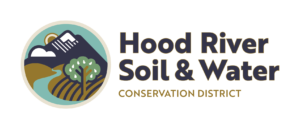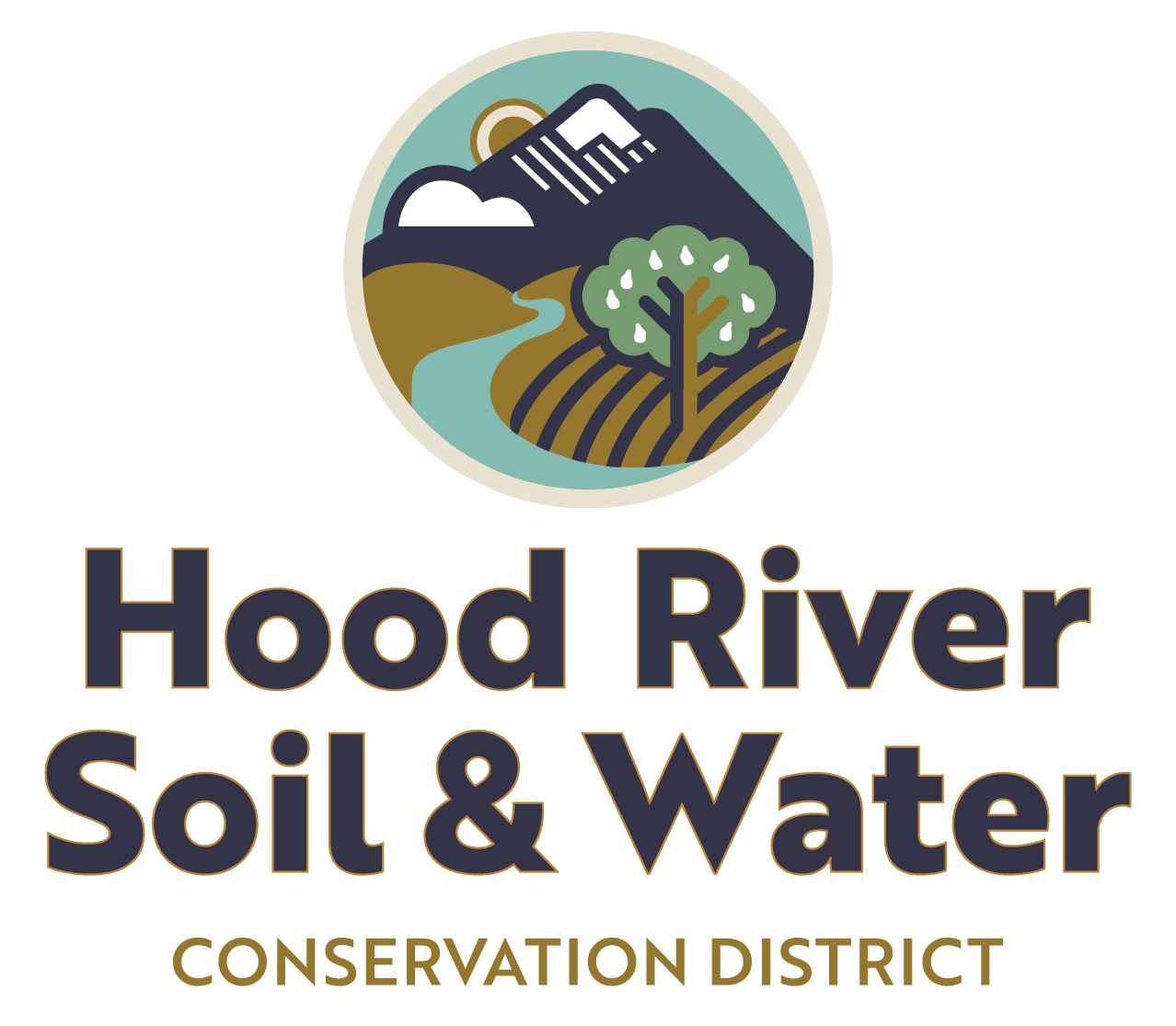In 2013, Hood River County and the Bureau of Reclamation completed a study of the County’s future water supply, potential for water conservation, and impacts to local fish populations. According to the study, by the year 2050 air temperatures in the Hood River Valley are predicted to rise 2.3° F on average. This will lead to more precipitation falling as rain instead of snow, resulting in less snowpack, lower summer streamflows, and insufficient water for both farms and fish habitat. Fortunately, the water conservation assessment highlighted significant remaining potential for water conservation, which could maintain or increase current stream flow levels.
On-Farm Irrigation Upgrades
The HRSWCD has been working with farmers to implement on-farm water conservation projects for two decades. Efficient irrigation equipment allows an irrigator to apply water at an appropriate rate for their soil type and other topographic features (slope, aspect). Older, traditional irrigation systems typically consist of hand or wheel lines with impact sprinklers that, on average, apply 2.4 to 3 feet/year. This can lead to the application of more water than is necessary and result in wasted labor, fertilizer, and water. New, more efficient systems typically consist of fixed poly-tubing with micro or rotator sprinklers. Studies in the Hood River Basin found that, on average, orchards with micro-sprinklers applied 1.53 feet/year, which is a 30 to 60% water savings. Pear trees, which occupy 62% of the valley’s agricultural land, typically need 1.6 feet of irrigation water in an average summer. Thus, they are well suited for irrigation with micro-sprinklers. Funding has been available to assist farmers with upgrading their irrigation systems through NRCS EQIP funds and OWEB small grants. If you are interested in upgrading your irrigation system, give us a call!
Irrigation Water Management
Practical information on plant physiology, crop water demand, soils, and techniques for irrigating efficiently can lead to better crop production and water conservation. Active water management will ultimately result in less water diverted from rivers. Soil moisture sensors and flow meters can be used to help time irrigations based on soil moisture and crop demand as opposed to calendar date. The goals of irrigation water management (IWM) practices and principles are to inspire more active and efficient orchard irrigation water management, thereby reducing per acre use of on-farm water and the amount diverted from streams. The outcome of these changes would lead to reduced water use without compromising productivity, ultimately leaving more water in-stream for fish. Maintaining sufficient water quantity in the Hood River and its tributaries through the summer irrigation period is vital to both the economy of Hood River County and the threatened salmon and steelhead that require sufficient habitat for spawning and rearing. Recent climate and hydrologic modeling for the Hood River Watershed predicts that summer streamflows will decline in the basin. Local irrigators will need to understand how to manage irrigation under those changing conditions and the benefits of doing so. The District’s goal is to assist more growers with implementing IWM and becoming aware of their on farm water use and how it relates to tree health and crop production as well as watershed conditions.
Irrigation Strategies
• Do not over irrigate. This sounds simple, but it isn’t. Most people err on the side of excess. Too much water has less visual impact than too little, but it wastes fertilizer as well as water.
• Use ET (evapotranspiration) charts that show estimates of crop water use and can help you decide when and how much to irrigate
• Use soil moisture monitoring equipment to measure how much moisture is in the soil and graph those readings to improve your irrigation accuracy.
• Know your crop’s tolerance for drought stress and irrigate accordingly.
• Know the water holding capacity of your soil. A sandy loam soil will not hold as much water as a silt loam, thus it must be irrigated more frequently, but with less water at each irrigation. Any extra water is lost to leaching.
• Consider installing valves in your irrigation system to deliver water more accurately where and when it is needed. Automation can further dial in the accuracy.
Call us to discuss your irrigation water management and ways we can help!






